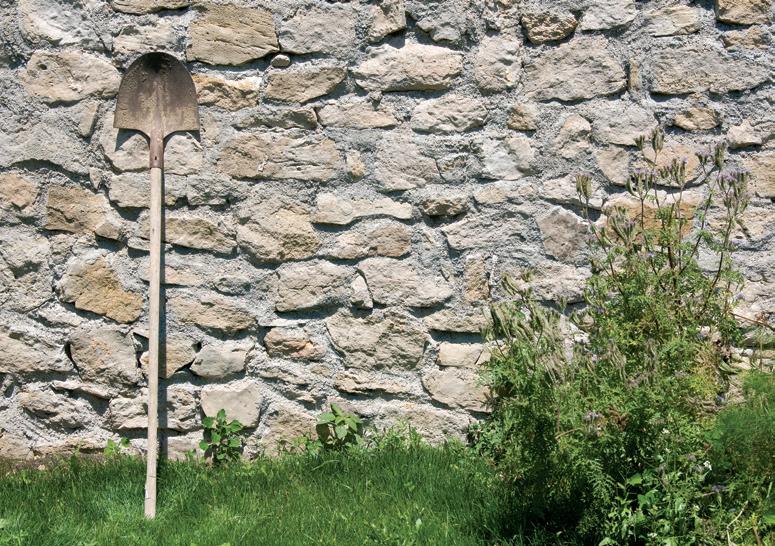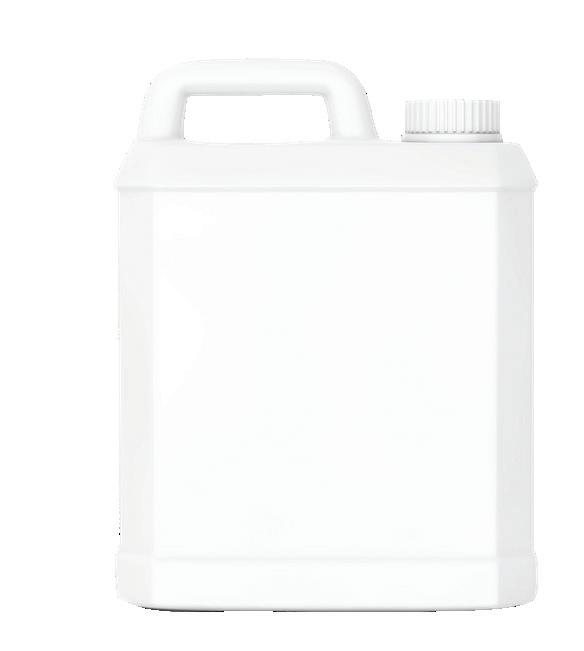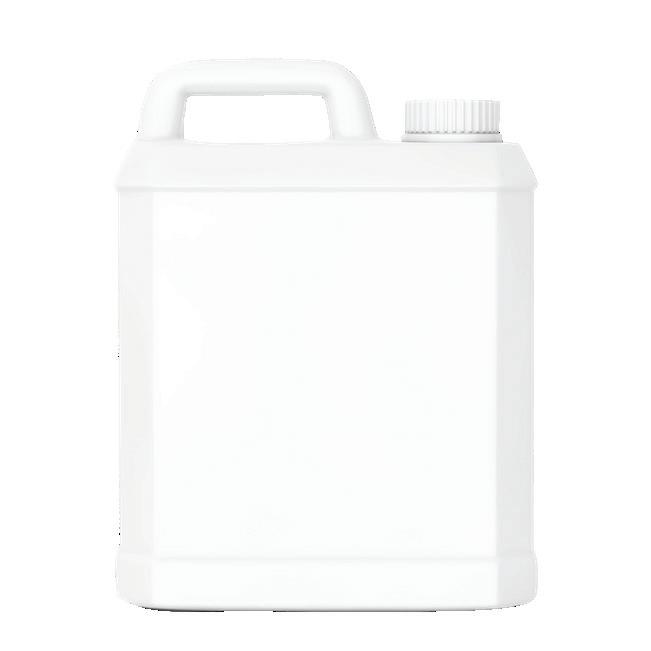
5 minute read
Guidelines to avoid costly issues Planting on septic drainfields
Guidelines to avoid costly issues
Ornamental plantings on septic drainfields
by Sheri Dorn, Public Service Associate & State Master Gardener Coordinator, UGA Extension
Ornamental plantings can be attractive and
beneficial options for the expanse of open ground designated for a septic drainfield. Properly chosen plants help manage moisture and nutrient levels in the soils around the drainfield, and can discourage activities that may cause site compaction and reduce the effectiveness of the system.
The drawback is that poor plant choices can create costly maintenance issues, and any septic drainfield repair work could disturb valued planting areas. By following a few simple guidelines, planting in these areas can be both pretty and practical.
Ornamental landscape plants are broadly grouped into two categories: woody ornamentals and herbaceous ornamentals.
Woody plants are shrubs and trees whose stems persist above ground year after year. These plants usually have larger root systems and mature sizes than herbaceous plants. Roots of woody ornamentals are more likely to interfere with septic drainfields. Herbaceous plants, on the other hand, die back to the ground during the winter and include annuals, perennials and turf. Perennials, including turf, will return the next year from their roots, but annuals will have to be planted fresh each year. These plants are usually smaller in size and their root systems tend to be shallower and less aggressive than those of woody plants.
Both woody and herbaceous plants can be used when landscaping on septic drainfields as long as a few guidelines are followed. Remember that septic drainfield lines are often very shallow, some no more than six inches from the surface. Excessive digging, rototilling or other methods of soil preparation for planting can damage these lines.
Do
> Do sample the soil periodically (every one to three years) to monitor soil pH and nutrient levels, correcting as necessary for plant
selections. Follow the same sampling and testing procedures as for other sites (refer to UGA
Cooperative Extension Circular 896, “Soil Testing for
Home Lawns, Gardens, and Wildlife Food Plots,” for more details: https://extension.uga.edu/publications/ detail.html?number=C896).
> Do wear rubber gloves to protect hands and skin from any harmful organisms within the soil.
Typically, the soil microbes help remove harmful pathogens; however, several site-specific factors, such as soil type, soil structure and weather, can affect this process. As a precaution, wear rubber gloves when gardening in this area. Wash the gloves in warm soapy water when finished, and allow the gloves to dry before putting them away.
> Do choose plants that will succeed with the amount of sun and moisture found on your septic
drainfield. Salt tolerance is also a consideration, as soil in drainfield areas may have higher salt levels resulting from nutrients in the effluent. Some suggestions include beebalm, daylily and yarrow.
> Do choose non-aggressive plants that are
unlikely to invade the drain lines. Herbaceous plants can be planted closest to the drainfield, turf can be planted over the drainfield, and shallowrooted perennials and annuals can be planted nearby.
Avoid compaction, crushing or damage to the drainfield during installation.
> Do install woody plants an appropriate and safe
distance from the septic drainfield. A good rule of thumb is to use the ultimate mature height of the
selected tree as the minimum planting distance from the septic drainfield, then increase the distance. For example, if you are planting a crabapple, plant the tree at least 25 feet from the nearest drain line; 50 to 75 feet would be even better. Consider planting smaller and less aggressive cultivars, if possible.
Don’t
> Don’t disturb the soil by rototilling deeply or
double digging. This could damage shallow septic drain lines.


> Don’t plant vegetable gardens or other edible
plants on septic drainfields. Harvestable parts of edible plants could become contaminated by soil microorganisms when planted on the drainfield.
Also, the frequent cultivation associated with vegetable gardening could damage drain lines.
> Don’t choose plants that typically thrive in
wet locations. Trees such as willow and birch are notorious for thriving in wet spots in the landscape, including water lines, sewer lines, septic drain lines and even wet spots along a foundation. When tree roots invade these septic drain lines, the extra moisture and nutrients favor root and plant growth, and lines become clogged and damaged.
> Don’t add soil on top of a drainfield unless it
is a minimal amount to install a plant. Adding soil on top of a drainfield can negatively affect the performance of the system.
> Don’t construct raised beds on a drainfield. > Don’t install irrigation systems in the drainfield.
The additional water could reduce evaporation and drying of the soil. Only water plants as needed until they are established, and avoid frequent irrigation that will reduce soil drying.
> Don’t install groundcovers that will form dense
mats and collect leaf debris. This can create cool, moist conditions that will prevent the soil from drying.
> Don’t mulch plants so thickly that soil moisture evaporation is reduced. > Don’t install rain gardens or any other landscape feature, such as a water garden or pond, over the drainfield. > Don’t use landscape fabrics or plastics as weed barriers; they interfere with the soil drying process. > Don’t install hardscape elements, such as nonpermeable and semi-permeable surfaces,
over the drainfield. Paving, pavers, decking and other surfaces will compact the drainfield, interfere with the soil drying process and may also damage drain lines.

> Don’t drive heavy vehicles on the drainfield.
When installing landscape features, carry materials to the planting location to avoid soil compaction.
Trees to avoid
> Willow (Salix spp.) > Birch (Betula spp.) > Magnolia (Magnolia spp.) > Poplar (Populus spp.) > Elms (Ulmus spp.) > Some maples (Acer rubrum, Acer saccharinum) When carefully chosen and placed strategically, ornamental plants can be a helpful and attractive addition to septic drainfields. Plants naturally cycle the water and nutrients from soils in a septic drainfield and their roots hold the soil in place. For best results, choose herbaceous plants with non-aggressive root systems and install woody ornamentals safe distances from drain lines.
POWER UP YOUR SOIL
MAXIMIZE YOUR FERTILIZER EFFICIENCY
Our bio-based fertilizers & specialty fertility products are blended to feed plants, improve soil fertility and build topsoil.

Fertility Forward®
High Performance Plant Nutrients Fertilizers ▪ Specialty Products Soil Amendments ▪ Custom Blends
Corp. HQ/MFR: Greene County Fertilizer Company 1490 Airport Rd., Greensboro, GA 30642
BUY/SHIP DIRECT
GreeneCountyFert.com
Fertilizer MFR ▪ Distributor of Chemical L&O pest control products










